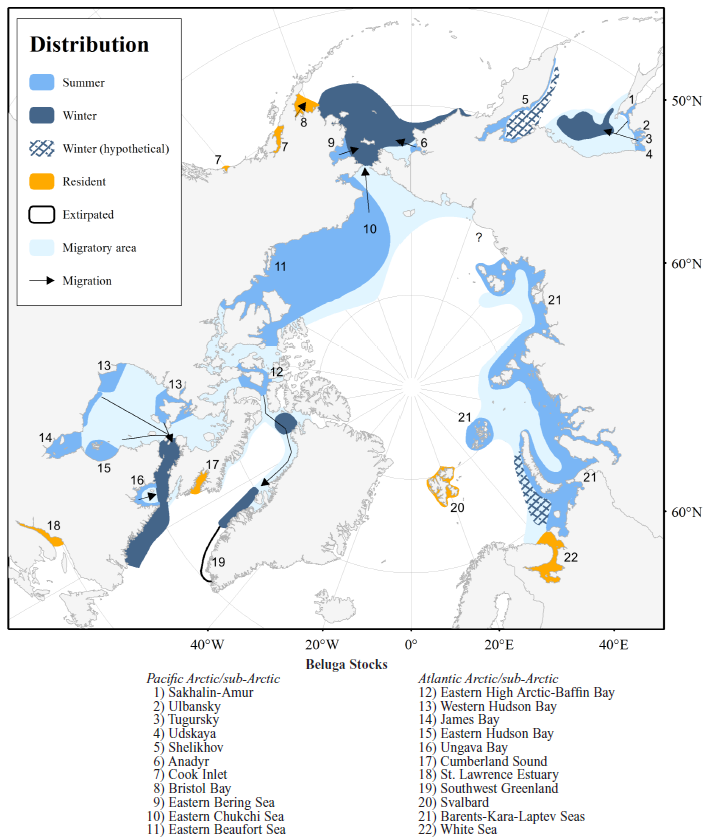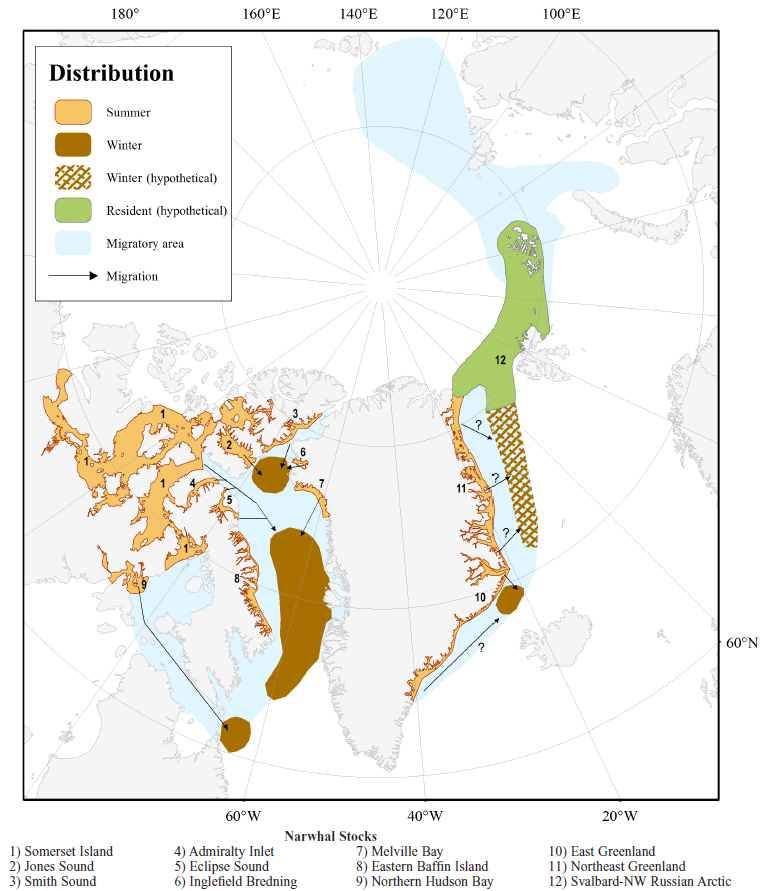1 September 2020: Publication of articles from the Global Review on Monodontids
The Global Review on Monodontids (GROM) updated stock structures, identified various stressors, and assessed stock status. NAMMCO is delighted that the results of the GROM have now been published as a series of scientific articles.
The monodontid family includes two species of toothed whales endemic to the Arctic and sub-Arctic: the narwhal (Monodon monoceros) and beluga (Delphinapterus leucas). Substantial new information has become available since previous reviews were carried out by the International Whaling Commission in the 1990’s. In 2017, NAMMCO therefore worked with a range of international experts to perform an updated review of all monodontid stocks. The results of this work were published in 2018 in the NAMMCO Global Review of Monodontids report. Now, the GROM has also been published as a series of peer-reviewed articles in a special issue of Marine Fisheries Review.
The key outcomes of the GROM are three-fold. First, it provided an update of the stock structure for both monodontid species, taking into account new information and technologies. Second, it identified the range of stressors affecting each stock and its habitat. On the basis of this, it then provided an assessment of the status of each stock.
Revision of the Structure of Monodontid Stocks
The GROM provided an updated review of the structure of all monodontid stocks based on the latest available information. It identified stocks through summer distribution on the basis of local knowledge, tagging data, genetic analysis, and aerial surveys. In cases of close proximity between groups, mitochondrial genetics (mtDNA) analyses were conducted to try and determine any potential affiliation. In light of available information, 21 beluga stocks (plus 1 extirpated in Southwest Greenland) and 12 narwhal stocks were identified. Having population units and stock structures updated on the basis of the latest information is crucial for ensuring sustainable management.
Global and Regional Stressors Affecting Monodontids
Human activities in the Arctic are expanding and increasingly impacting monodontids. The GROM therefore considered and identified a range of anthropogenic stressors during its review. This included issues such as: hunting, live captures, competition with fisheries, climate change, noise disturbance from shipping traffic, industrial activities, and seismic surveys.
The GROM noted that in the past, some populations were substantially reduced through commercial hunting and culling. More recently, however, some populations have declined due to uncontrolled subsistence hunting and environmental degradation. In the future, it was highlighted that the impacts of climate change may have a significant impact. For example, through altered prey distribution and/or the increased shipping made possible due to melting ice. The level of concern for each of these threats varies according to location. The GROM took this into account during its assessment of stock status.
Current Stock Status of Monodontids
The GROM assessed the status of each stock and assigned different levels of concern. These levels of concern were determined according to: the confidence that current removals are sustainable, the impact of the different stressors, and whether reliable information was available.
The beluga stocks highlighted to be of greatest concern were the small stocks in Ungava Bay (possibly extirpated), Cook Inlet, St. Lawrence Estuary, Cumberland Sound, and the stocks for which there is limited knowledge and high levels of uncertainty. This included Eastern Hudson Bay and the Barents-Kara-Laptev Seas. For narwhals, the stocks of greatest concern were the likely overexploited small stocks in Melville Bay and East Greenland. Concerns in the latter case also included the multiple potential threats impacting narwhal habitat and the shortage of data on stock structure.
Conclusion
The publication of the GROM as a series of articles provides an important update on monodontid stock structure and status.
However, rapid environmental changes continue to take place in the Arctic and sub-Arctic regions. This will have an ongoing influence on the distribution and status of monodontid stocks. Therefore the GROM argued that future reviews should continue to reevaluate conclusions regarding stock identity and provide updated status assessment. The review also identified the important knowledge gaps to fill to support such future assessments.
All of the articles from the GROM published in Marine Fisheries Review can be read here.
More information about narwhals and belugas is also available on our species pages.




